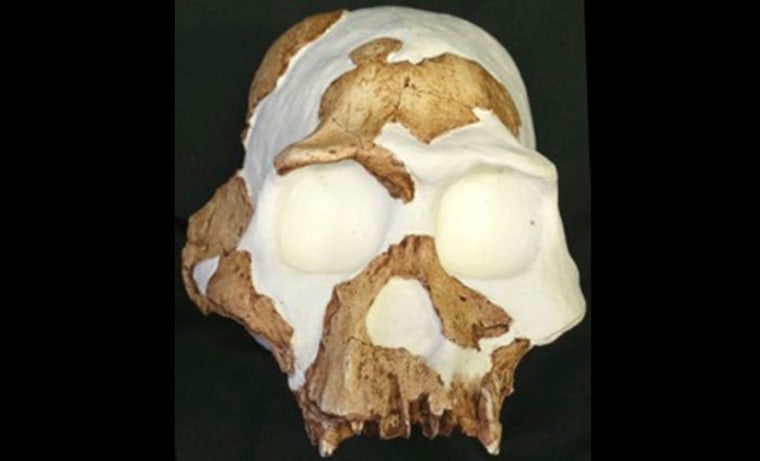Your family tree has a new and colorful member, Homo gautengensis, a toothy, plant-chomping, literal tree swinger that was just named the world's earliest recognized species of human.
The new human, described in a paper accepted for publication in HOMO - Journal of Comparative Human Biology, emerged over 2 million years ago and died out approximately 600,000 years ago. The authors believe it arose earlier than Homo habilis, a.k.a. "Handy Man."
Darren Curnoe, who led the project, told Discovery News that Homo gautengensis was "small-brained" and "large-toothed."
Curnoe, an anthropologist at the University of New South Wales School of Biological, Earth and Environmental Sciences, said that it was "probably an ecological specialist, consuming more vegetable matter than Homo erectus, Homo sapiens, and probably even Homo habilis. It seems to have produced and used stone tools and may even have made fire," since there is evidence for burnt animal bones associated with this human's remains.
Identification of the new human species was based on partial skulls, several jaws, teeth and other bones found at various times at South Africa's Sterkfontein Caves, near Johannesburg.
Curnoe and colleague Phillip Tobias, who is a South African paleoanthropologist, believe Homo gautengensis stood just over 3 feet (1 meter) tall and weighed about 110 pounds (50 kilograms). It walked on two feet when on the ground, "but probably spent considerable time in trees, perhaps feeding, sleeping and escaping predators," Curnoe said.
The researchers further believe that it lacked speech and language, skills that help to make humans unique among other animals today. Due to these missing abilities, its anatomy and geological age, the researchers think that it was a close relative of us, but not necessarily our direct ancestor.
The discovery of this new human not only adds to our overall family tree, but it may also lead to a big shake-up. For decades, scientists have been searching for the species that eventually evolved into the first Homo genus member. Earlier this year, it was announced that this "missing link" human may have been unearthed — in the form of Australopithecus sediba.
De Ruiter of Texas A&M University and his colleagues proposed that A. sediba was the transitional species between Australopithecus africanus (a non-human not in our genus) and Homo erectus — "Upright Man."
The newly identified human, however, throws a wrench into that theory, because A. sediba was "much more primitive than H. gautengensis, and lived at the same time and in the same place," according to Curnoe. As a result, "Homo gautengensis makes Australopithecus sediba look even less likely to be the ancestor of humans."
Curnoe instead proposes that Australopithecus garhi, found in Ethiopia and dating to about 2.5 million years ago, is a better possibility for the earliest non-Homo direct ancestor in the human evolutionary line.
Curnoe still regards East Africa as being the cradle of humans, "because it has the oldest fossil record, going back to about 7 million years, but we are clearly learning now that there was much greater diversity in our evolutionary tree than we realized for a long time."
"If we compress all of human evolution into a single year, we have been alone only since the last hour on December 31, so the situation we find ourselves in today — we are alone — is unusual," Curnoe said. "We need to explain why this is the case. Was it climate, or are we responsible for the demise of all of our close relatives, including recently the Neanderthals and the Hobbit (Homo floresiensis)?"
